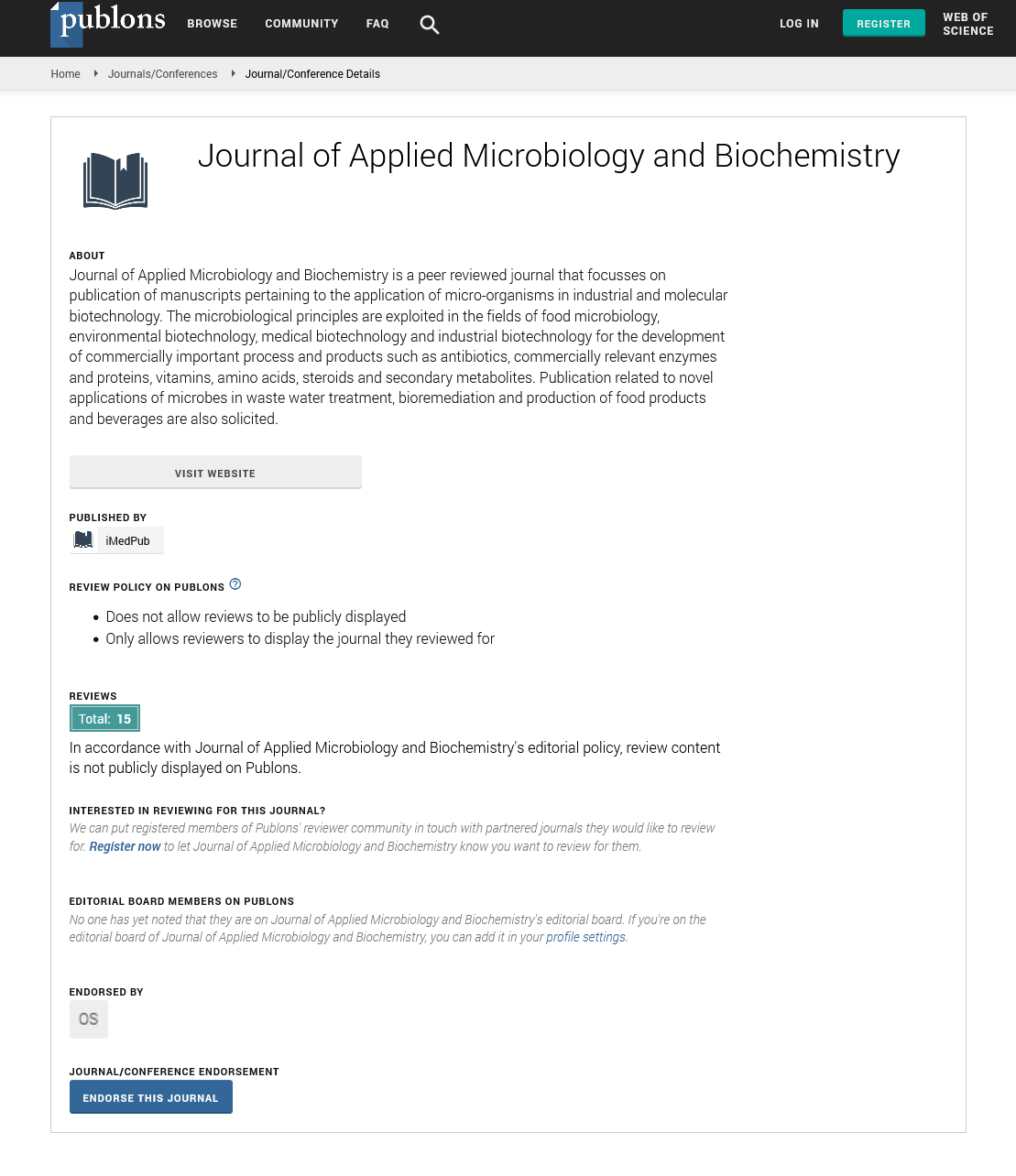ISSN : ISSN: 2576-1412
Journal of Applied Microbiology and Biochemistry
Abstract
Nasopharyngeal Temperature Probes: Is South Africaâ??s Current Decontamination Process Adequate?.
BACKGROUND
The standard practice in many institutions incorporates nasopharyngeal probes for temperature monitoring in patients undergoing general anaesthesia. Current disinfection guidelines for these devices are not clear and they are poorly adhered to. In South Africa, these temperature probes are reused and subjected to an unstandardized decontamination processes. This study sought to investigate the nasopharyngeal temperature probe as a possible cross-contaminant and investigate the efficacy of current cleaning practices.
METHOD
This descriptive double-blind study viewed 48 nasopharyngeal temperature probe cultures across the 4 different cleaning protocols. These probes were randomized to a cleaning protocol. The cleaning protocols included water wash, alcohol based wash, dry wipe and (2.4%glutaraldehyde) Cidex® wash. After randomization, the probes were aseptically cultured and inoculated to blood agar plates. After 48hrs of aerobic culture, specimens were examined, and microorganisms identified. Logistic regression analysis assessed the efficacy of these decontamination processes.
RESULTS
Chi-Square analysis [p-value < 0,0001] established the nasopharyngeal temperature probe as a source of cross-contamination. Diverse pathogens were identified on nasopharyngeal temperature probes after exposure to a predetermined cleaning practice. Logistic regression of these cleaning methods [confidence interval of 95%] illustrates Hibitane® and CIDEX® methods as being more effective, yet only the CIDEX® group demonstrated decontamination success in excess of 90%.
CONCLUSION
The data shows that the nasopharyngeal temperature probe is indeed a source of cross-contamination. It goes on to highlight the issue of pathogenic spread due to inadequate decontamination of these temperature probes.
Author(s): Ryan Davids
Abstract | Full-Text | PDF
Share This Article
Google Scholar citation report
Citations : 342
Journal of Applied Microbiology and Biochemistry received 342 citations as per Google Scholar report
Journal of Applied Microbiology and Biochemistry peer review process verified at publons
Abstracted/Indexed in
- Google Scholar
- China National Knowledge Infrastructure (CNKI)
- Cosmos IF
- Directory of Research Journal Indexing (DRJI)
- Publons
- Secret Search Engine Labs
Open Access Journals
- Aquaculture & Veterinary Science
- Chemistry & Chemical Sciences
- Clinical Sciences
- Engineering
- General Science
- Genetics & Molecular Biology
- Health Care & Nursing
- Immunology & Microbiology
- Materials Science
- Mathematics & Physics
- Medical Sciences
- Neurology & Psychiatry
- Oncology & Cancer Science
- Pharmaceutical Sciences
